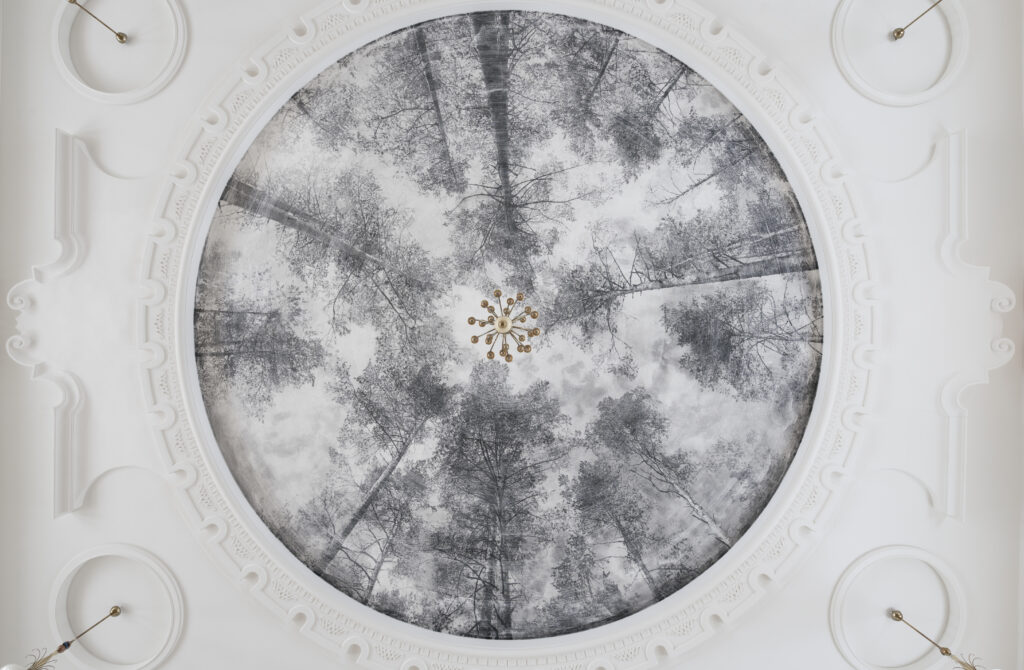
Tõnis Saadoja (1980) is a painter, working with figurative analysis and matters of personal history (writings) and “small histories”. His works are described by their conceptual structure and quest for the technically exclusive form in everyday motives. The use of series are prevailing in Saadoja’s ouvre, the selected motive varies in a multiple sequence of works. Using photography as a starting point, he deals with the deceptive un-pretentiousness but also its capacity to shape reality.
In Saadoja’s early painting series “The Melting of an Ice cube” (2003) and “Exercise” (2004) and “Exercise 2” (2010) which depict a wooden plank, it’s possible to notice a scale of instrumentality that also pops up in his later work. “The Melting of an Ice cube” depicts with conceptual consistency the process in which the invested energy and volume is in contradiction with the choice for undistinguished motive. Methodical repetitiveness and obsessive attention to detail are also expressed in his later work. With the series “Mainstream I-XX” (2005) Saadoja paraphrased Gerhard Richter’s painting series “48 portraits” which was exhibited in 1972 at the Venice Biennial. The basis of those paintings was a single portrait of a smiling Richter, depicted through different painting techniques and figure deformations.
Saadoja displays urban views in the series “Hometown Tallinn” (2007-2008), “14.06.09” (2009) and “Candle” (2011). “Hometown Tallinn” is a 94-part series of miniature aquarelles, which offer a cross-section of the development of urban space and different social reference points in the format of a souvenir. “14.06.09” is a 9-part light box series, which by blinking in sync, depict neglected nightly crossroads of Tallinn city centre. “Candle”, shown from a carousel, exposits a sequence of 64 photos of deterioratingurban settings, taken in similar geometrical composition.
Saadoja has created a painting, which is situated on the ceiling of a Stalinist building in Tallinn city centre, address Sakala 3. This 50-square metre artwork is one of the few contemporary monumental paintings in a public space. The circular painting depicts pine treetops, Saadoja binds the fleeting nature of monumental artworks derived from traces of degradation and pale monochromatic colouring.
Thereafter Saadoja returns to his signature method – the gradually immersive series of photo realistic paintings. The artwork “Architectural Photography with a Little Boy. Oil Paintings on Canvas” (2014) depicts staged memories, reconstructed motives from the past, in which the questions of childhood memories and the influence of space lie at the centre of the development of a human-being. The paintings are based on polaroid photos taken by the author, which depict contemporary architecture, but also the architecture of his childhood during the 1980s. “Etudes for Piano and Canvas” is a monochrome series of still-lives that portray close-ups of objects photographed on a black reflecting surface and seek a balance between the playful, literary and formal impulses of painting and photography.
The artist’s exhibition “Studio” (2018) is an exhibition which examines pictures as a process; this is an exhibition that speaks primarily about painting, by dissecting the construction and architecture of painting.By giving up documental, anthropological and otherwise restrictive concreteness, the pictorial possibilities are spread before the viewer – sometimes compressed, sometimes dissipated.
Tõnis Saadoja studied painting at the Estonian Academy of Arts (BA, 2004) and liberal arts at East-London University (MA, 2006). He has been awarded with the Vaal gallery young artist prize (2006, 2008, 2012), Köler Prize People’s Choice Award (2011) and Kristjan Raud award (2013). In 2019 Saadoja participated in a residency at WIELS Contemporary Art Center. He was one of the recipients of the artist salary 2017–2020.